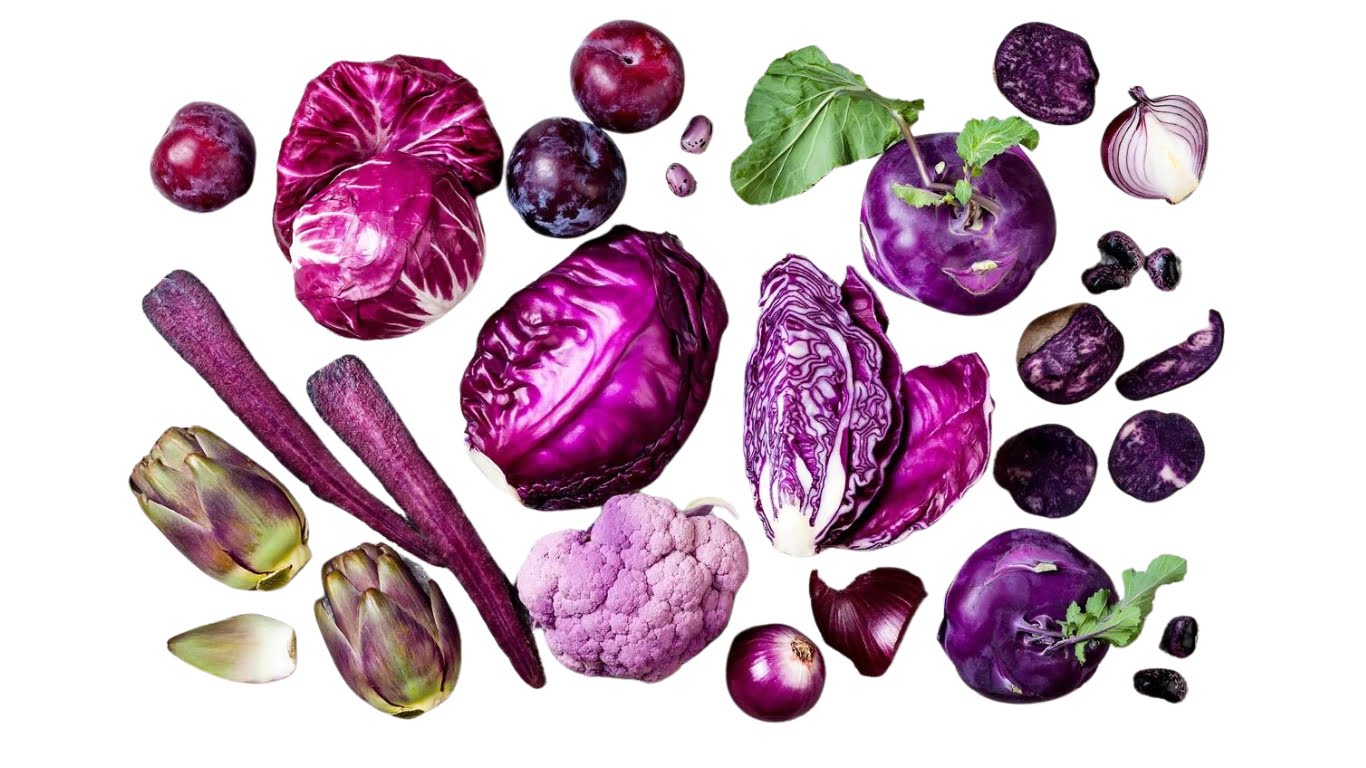Introduction:
Welcome to the fascinating world of blue vegetables! In this era of diverse culinary exploration and health-conscious living, vibrant hues of blue vegetables have caught the attention of both chefs and nutrition enthusiasts alike. Blue vegetables not only add a splash of stunning color to your plate but also offer a host of health benefits.
But what exactly are blue vegetables? Blue vegetable is a unique subset of vegetables that possess a distinct bluish or purplish coloration in their flesh, skin, or leaves. These striking pigments result of naturally occurring compounds called anthocyanins, which are powerful antioxidants known for their health-promoting properties.
The list of blue vegetables is varied and exciting, ranging from blue potatoes and blue corn to blue tomatoes and blue cauliflower. Each of these vegetables carries its own set of flavors and textures, making them an intriguing addition to any culinary repertoire.
Blue vegetables are not only visually appealing but also packed with nutritional goodness. They are rich in antioxidants, which help protect body against harmful free radicals. Additionally, vegetables have been associated with anti-inflammatory effects, cardiovascular health benefits, brain function support, and digestive system regulation.
Definition and Characteristics of Blue Vegetables:
They refer to a specific category of vegetables that have a distinct bluish color in their flesh, skin, or both. This unique hue is result of various pigments, such as anthocyanins, present in these vegetables. The intensity of blue color may vary among different types of blue vegetables. These vibrant vegetables not only add visual appeal to meals but also offer a range of health benefits due to their rich antioxidant content.
Vegetables That Are Naturally Blue:
Blue vegetables that naturally occur in a blue color are unique and visually striking. While most vegetables tend to be green, red, or yellow, these blue-hued vegetables stand out due to specific pigments present in their cells. The blue color in these vegetables is often a result of anthocyanins, which are a type of flavonoid pigment known for their antioxidant properties. Anthocyanins can range in color from red to purple to blue, depending on pH levels in plant’s tissues. When pH is more acidic, anthocyanins appear as blue.
Name of Blue Vegetables & Key Facts:
These are the following names and key facts of blue vegetables.
- Blue Potatoes:
- Blue potatoes have a blue or purple skin with blue-colored flesh.
- They are rich in antioxidants, particularly anthocyanins.
- Blue potatoes can be boiled, mashed, roasted, or used in a variety of culinary preparations.

Key facts (per 100-gram serving)
- Calories: 72
- Carbohydrates: 16.4 grams
- Fiber: 2.2 grams
- Protein: 2 grams
- Fat: 0.2 grams
- Blue Corn:
- Blue corn is a type of maize with kernels that range from dark blue to purple.
- It contains anthocyanins, which give it a deep blue color.
- Blue corn is often ground into flour and used to make tortillas, chips, and other traditional corn-based products.
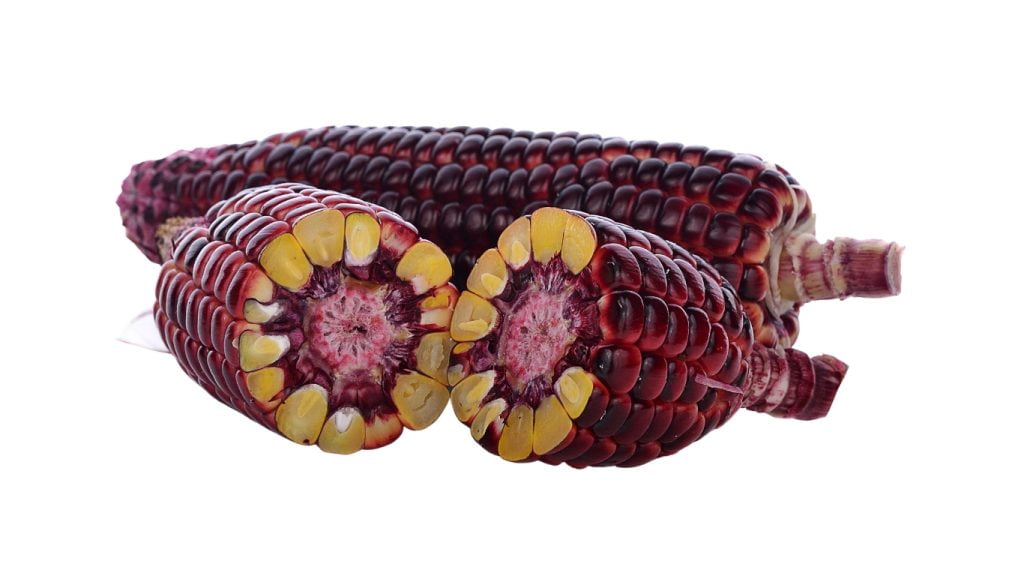
Key facts (per 100-gram serving)
- Calories: 365
- Carbohydrates: 76 grams
- Fiber: 7.5 grams
- Protein: 9 grams
- Fat: 3.9 grams
- Blue Tomatoes:
- Blue tomatoes have a bluish-purple skin and flesh.
- They contain anthocyanins and have a slightly sweeter taste compared to regular red tomatoes.
- Blue tomatoes are used in salads, salsas, sauces, and other culinary applications.
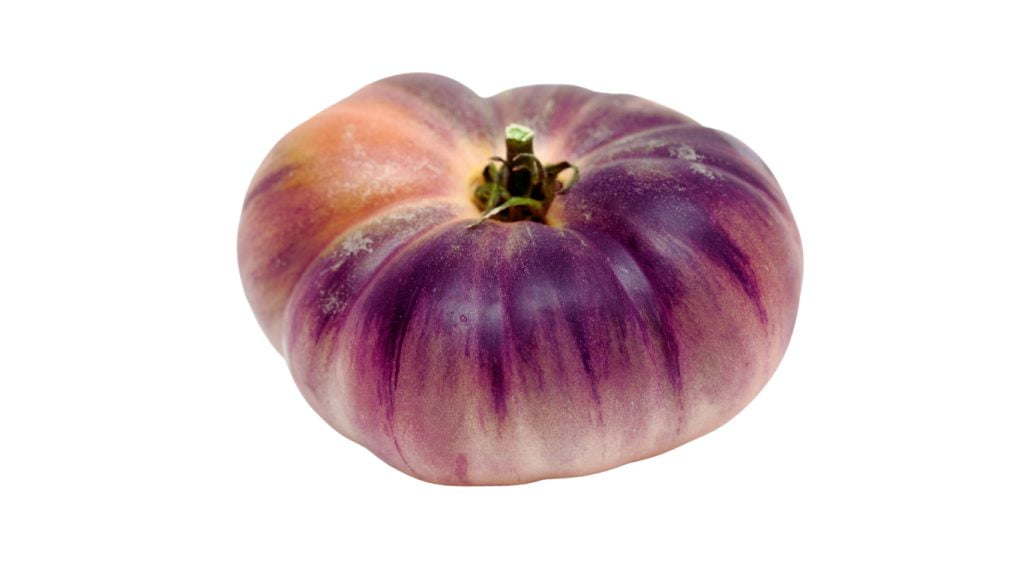
Key facts (per 100-gram serving)
- Calories: 18
- Carbohydrates: 3.9 grams
- Protein: 0.9 grams
- Fat: 0.2 grams
- Fiber: 1.2 grams
- Blue Cauliflower:
- Blue cauliflower has a vibrant blue or purple hue.
- It owes its color to anthocyanins.
- Blue cauliflower can be used as a colorful substitute for traditional white cauliflower in various recipes.
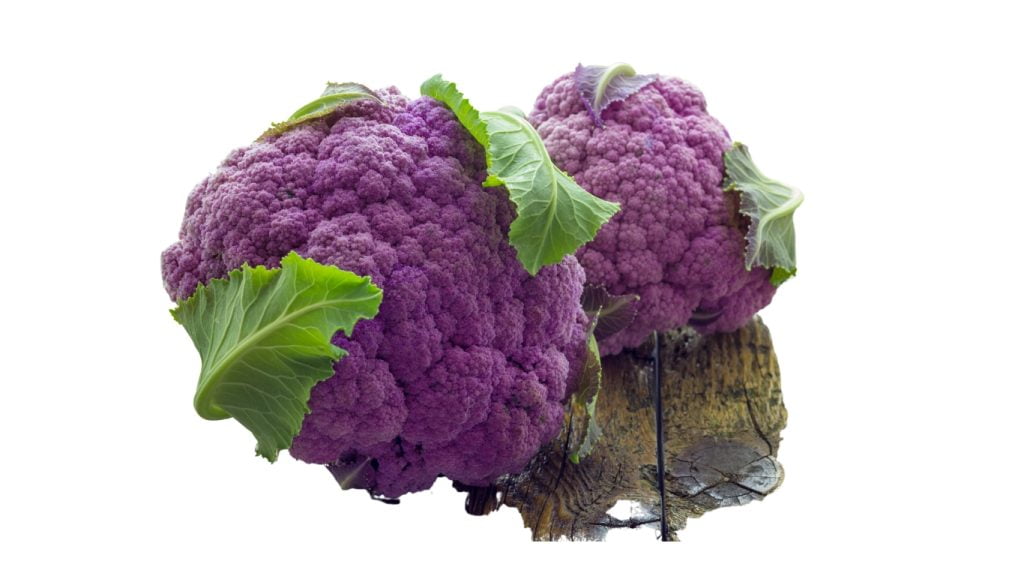
Key facts (per 100-gram serving)
- Calories: 25
- Carbohydrates: 5 grams
- Fiber: 2 grams
- Protein: 2 grams
- Fat: 0 grams
- Blue Kale:
- Blue kale, also known as purple kale or Tuscan kale, has blue-green leaves with purple veins.
- It contains anthocyanins, which contribute to its blueish hue.
- Blue kale is popular in salads, stir-fries, smoothies, and as a nutritious leafy green.
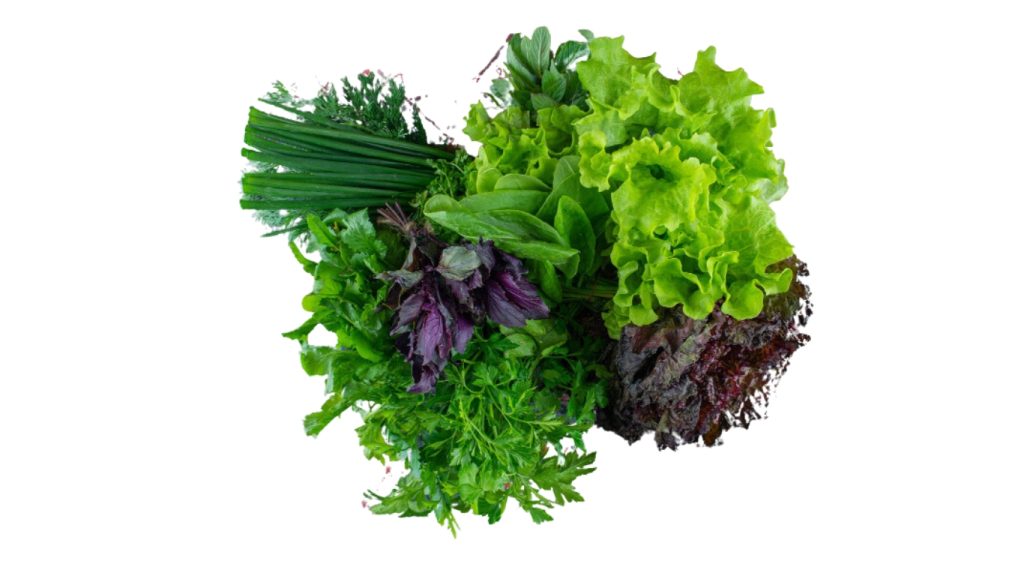
Key facts (per 100-gram serving)
- Calories: 49
- Carbohydrates: 9 grams
- Protein: 4.3 grams
- Fat: 0.6 grams
- Fiber: 2 grams
- Blue Carrots:
- Blue carrots have an outer skin that appears blue or purple.
- They contain anthocyanins along with beta-carotene.
- Blue carrots can be used in same way as traditional orange carrots, in dishes such as stews, soups, and salads.
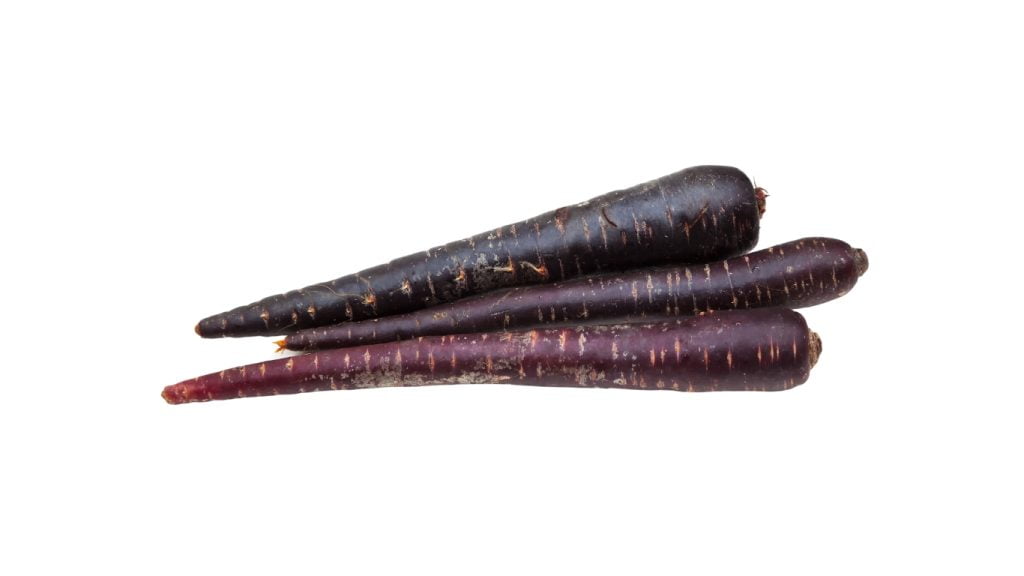
Key facts (per 100-gram serving)
- Calories: 41
- Carbohydrates: 9.6 grams
- Fiber: 2.8 grams
- Protein: 0.9 grams
- Fat: 0.2 grams
These vegetables not only offer a visually striking addition to meals but also provide unique flavors and nutritional benefits due to their vibrant pigmentation. Incorporating them into your diet can diversify your vegetable choices and contribute to a well-rounded, colorful plate.
Health Benefits of Vegetables that are Blue:
There are the following health benefits of blue vegetable:
- Heart Health:
The antioxidants and phytochemicals present in naturally blue herbs help reduce the risk of heart disease by preventing oxidative stress and inflammation. These vegetables may also support healthy cholesterol levels and help maintain optimal blood pressure. - Brain Function:
The rich antioxidant content in blue herbs can potentially improve cognitive function and protect against age-related cognitive decline. Some studies suggest that anthocyanins found in naturally blue herbs may enhance memory and promote brain health. - Anti-Cancer Properties:
The presence of antioxidants and phytochemicals in naturally blue herbs has been linked to a reduced risk of certain types of cancers, including breast, colon, and prostate cancer. These compounds help neutralize harmful free radicals and inhibit growth of cancer cells. - Weight Management:
The high fiber content in naturally blue vegetables contributes to satiety, helping you feel fuller for longer and potentially aiding in weight management. Additionally, their low-calorie nature makes them a nutritious addition to a calorie-controlled diet. - Eye Health:
Some naturally blue vegetables, like blueberries, are known for their potential benefits to eye health. The antioxidants found in these vegetables can protect eyes from oxidative stress and age-related macular degeneration, a leading cause of vision loss.
Nutritional Benefits of Naturally Blue Vegetables:
These are the nutritional benefits of naturally vegetables that are blue :
A. High in Antioxidants and Phytochemicals:
Naturally blue vegetables, such as blueberries, indigo rose tomatoes, and purple asparagus, are known for their vibrant blue or purple pigments. These pigments are a result of compounds called anthocyanins, which act as powerful antioxidants. Antioxidants help protect our bodies against damage caused by harmful free radicals, reducing the risk of chronic diseases like cancer and cardiovascular diseases. Phytochemicals found in naturally blue herbs also have anti-inflammatory properties and can support overall health.
B. Vitamins and Minerals Found in Naturally Blue Vegetables:
Vegetables that are blue are packed with essential vitamins and minerals that contribute to overall well- being. Some common vitamins set up in these vegetables include vitamin C, vitamin K, and various B vitamins like folate. Also, they are rich in minerals analogous to potassium, manganese, and bull . These nutrients play vital places in supporting vulnerable function, promoting healthy bones, abetting in cellular processes, and maintaining optimal body functioning.
C. Dietary Fiber Content:
Naturally blue Sauces are excellent sources of salutary fiber. Fiber is an essential element of a healthy diet as it aids in digestion, promotes regular bowel movements, and helps maintain a healthy weight. It also helps regulate blood sugar situations and lowers the threat of heart complaint. Consuming vegetables high in salutary fiber can contribute to a balanced diet and support overall gastrointestinal health.
Naturally Blue Vegetable into Your Diet:
There are a few ways to include naturally blue herbs into your diet. Here are a few ideas:
- Add them to salads:
Blue vegetables like blue cabbage, blue carrots, and blue sludge can add a pop of color and flavor to salads. - Rally them:
Riding vegetables brings out their natural agreeableness. Try riding blue potatoes, blue carrots, or blue onions. - Brume them:
Storming is a quick and easy way to cook blue vegetables. Try storming blue kale, blue broccoli, or blue asparagus. - Grill them:
Grilling blue vegetables gives them a hoarse flavor. Try grilling blue sludge, blue zucchini, or blue squash. - Make a haze or stew:
Blue vegetables can add a unique flavor and color to mists and stews. Try adding blue cabbage, blue carrots, or blue sludge to your coming batch of haze or stew.
If you’re looking for a way to add more color and nutrients to your diet, try including naturally blue vegetables. They’re a delicious and healthy way to add variety to your meals.
Culinary Uses of Vegetables that are Blue:
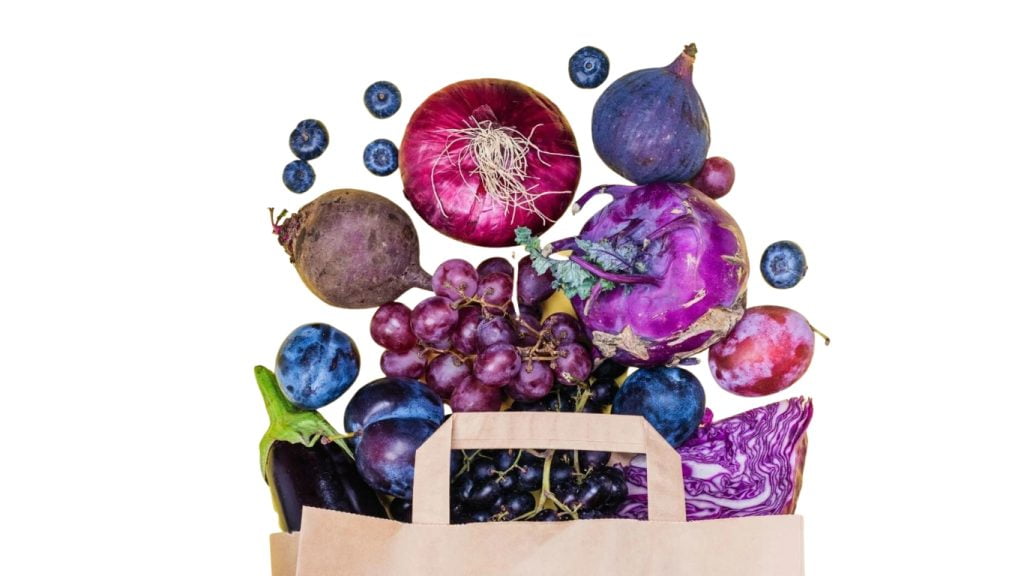
- Blue Potato Salad: Ingredients:
- Blue potatoes, boiled and diced
- Red onions, finely chopped
- Celery, diced
- Fresh parsley, chopped
- Mayonnaise or Greek yogurt
- Dijon mustard
- Lemon juice
- Salt and pepper to taste
- Blue Corn Tacos: Ingredients:
- Blue corn tortillas
- Grilled chicken, shredded
- Avocado slices
- Chopped tomatoes
- Shredded lettuce
- Cilantro, chopped
- Lime wedges
- Hot sauce (optional)
- Blue Tomato Salsa: Ingredients:
- Blue tomatoes, diced
- Red onion, finely chopped
- Jalapeño pepper, seeds removed and minced
- Fresh cilantro, chopped
- Lime juice
- Salt and pepper to taste
- Roasted Blue Cauliflower: Ingredients:
- Blue cauliflower, cut into florets
- Olive oil
- Garlic powder
- Paprika
- Salt and pepper to taste
- Blue Kale Smoothie: Ingredients:
- Blue kale leaves, stems removed
- Frozen blueberries
- Banana
- Almond milk (or any preferred milk)
- Honey or maple syrup (optional)
- Glazed Blue Carrots: Ingredients:
- Blue carrots, peeled and sliced
- Butter or olive oil
- Honey
- Lemon juice
- Salt and pepper to taste
These recipe ideas showcase the versatility of blue vegetables and blue fruits provide delicious ways to incorporate them into various dishes. Feel free to adjust ingredients and seasonings to suit your taste preferences. Enjoy exploring vibrant world of vegetables in your culinary adventures.
Conclusion:
In conclusion, blue vegetables and naturally blue vegetables showcase both versatility and exceptional nutritional value. From blue potatoes to blueberries, these unique plant based foods offer an array of health benefits. They are packed with antioxidants, vitamins, minerals, and dietary fiber. The vibrant blue color not only adds visual appeal to our dishes but also indicates presence of powerful compounds that support overall well-being. Whether you enjoy blue vegetables in savory dishes or naturally blue vegetables in sweet treats, they can contribute to a balanced and nutritious diet. So, let’s embrace diversity of blue vegetables and naturally blue vegetables, and savour goodness they bring to our plates.

